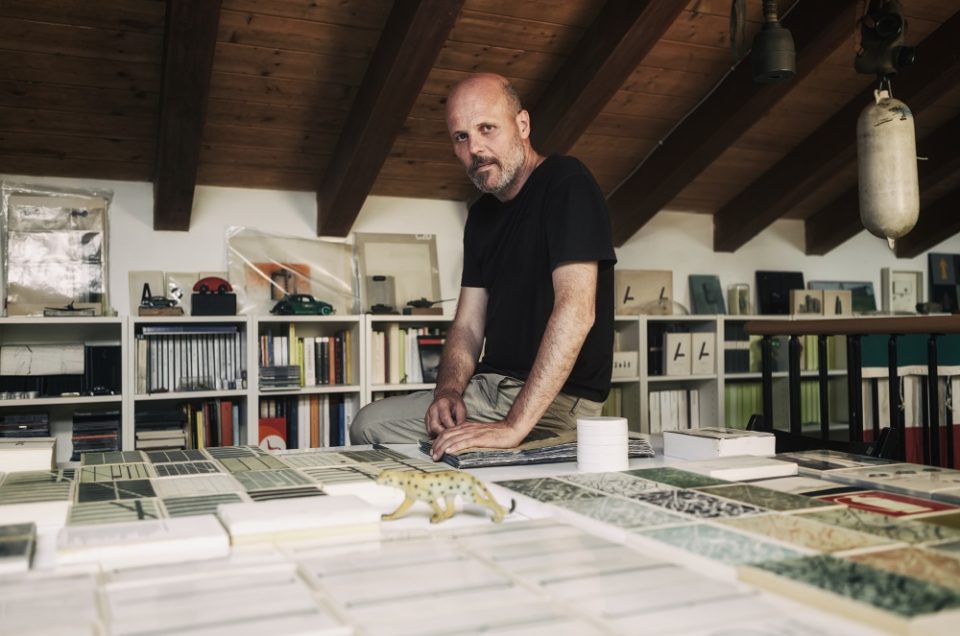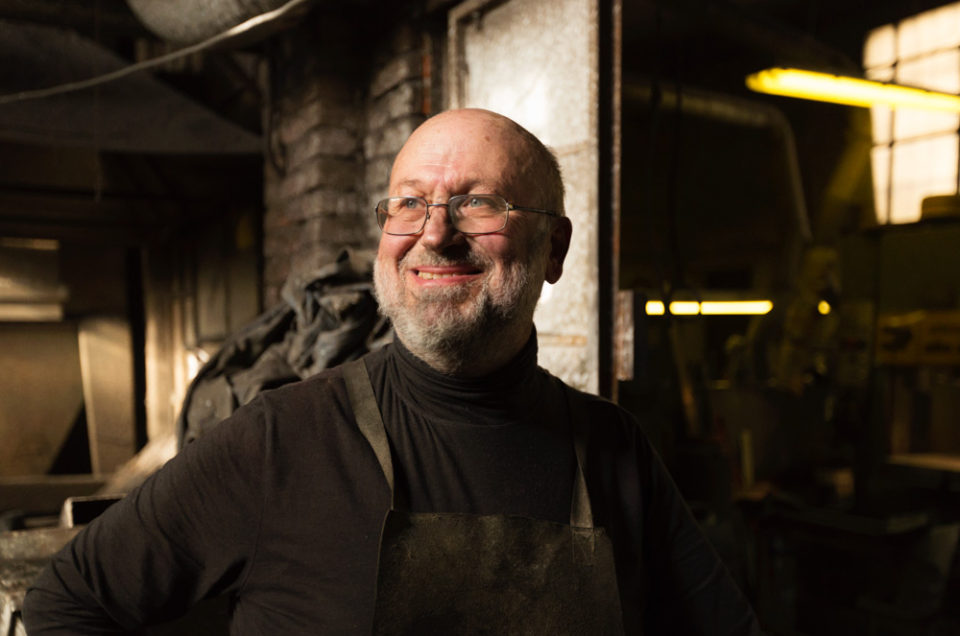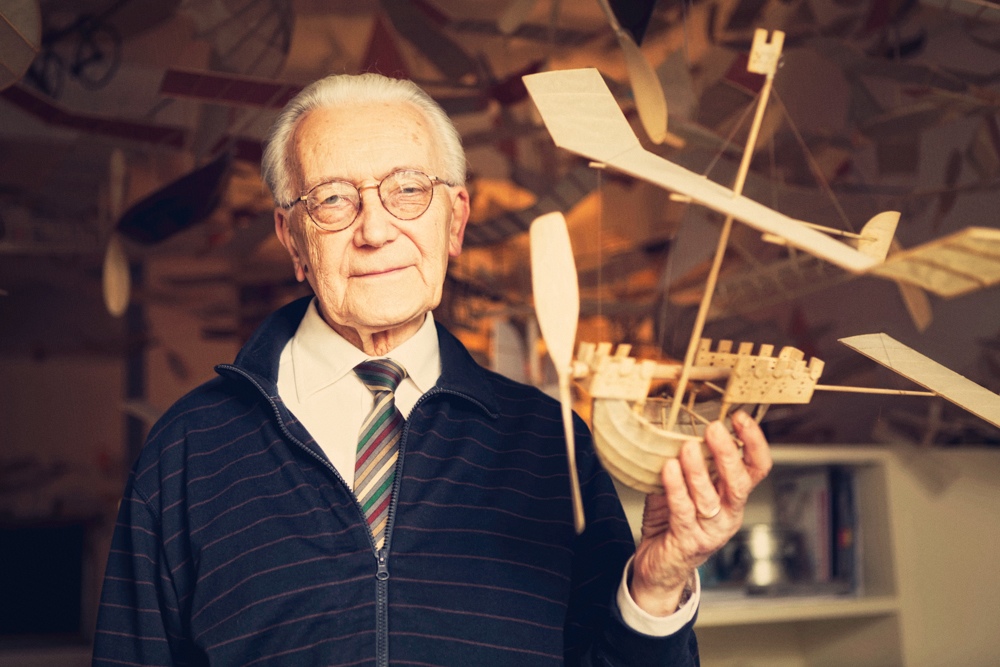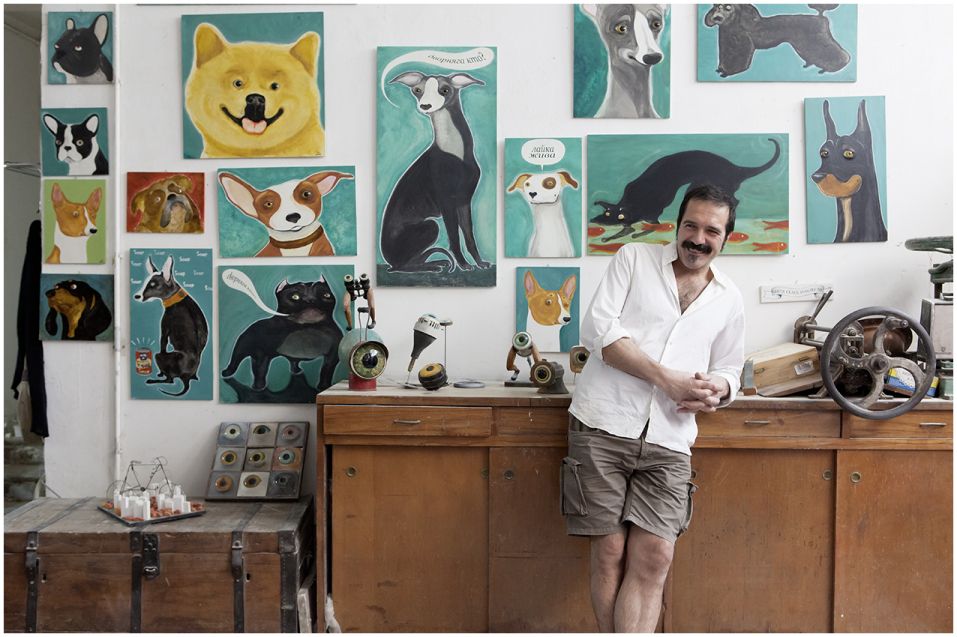
Stefano Prina creates eyes. Big, small, green and orange. Eyes belonging to monsters, reptiles, fish, and eyes that are almost human. They are to be found everywhere in his workshop in Milan, in unusual portraits of dogs, in small anthropomorphic sculptures that he affectionately calls “monsters”, hanging on stalks as if they were flowers, hidden inside thousands of drawers.
Stefano is an architect, but above all he is an old school artisan. Ever since he was a child he has had a passion for manual labour. He loves getting dirty, using machines, covering the place in dust and creating something from nothing. After all, as he tells us during the interview, he wouldn’t know (or he wouldn’t like) to do anything else. He began in 1984 while attending university, constructing the models used in architectural projects. Over the last few years he continues to devote himself to the portraits of dogs and the “Little Shop of Monsters”.
We went to interview him in his workshop, a wonderful room filled with treasure and one-of-a kind objects. He spoke to us about creativity, manufacturing times, manias and passions, and of the origins of his obsession for eyes.
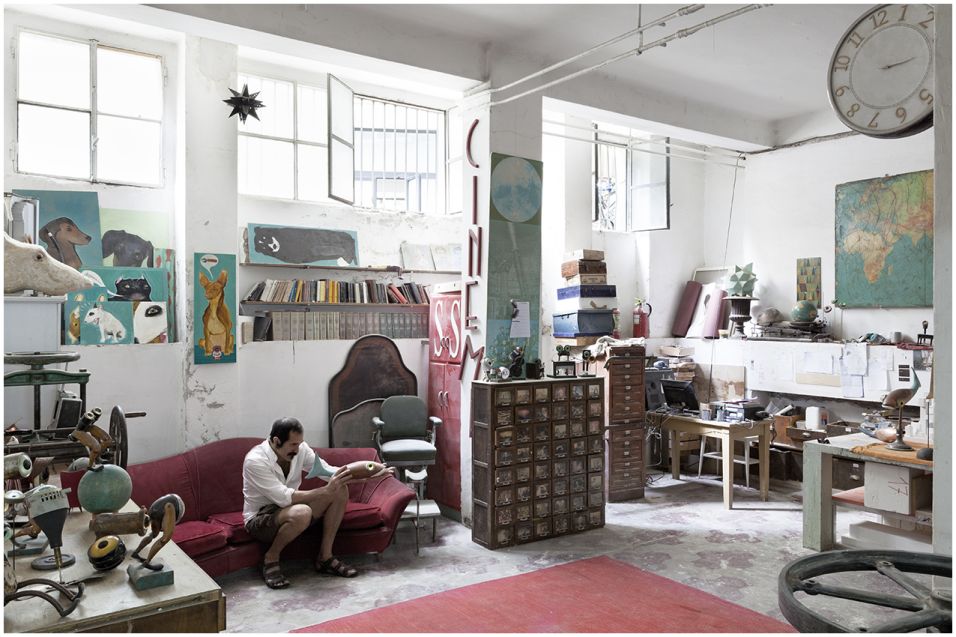
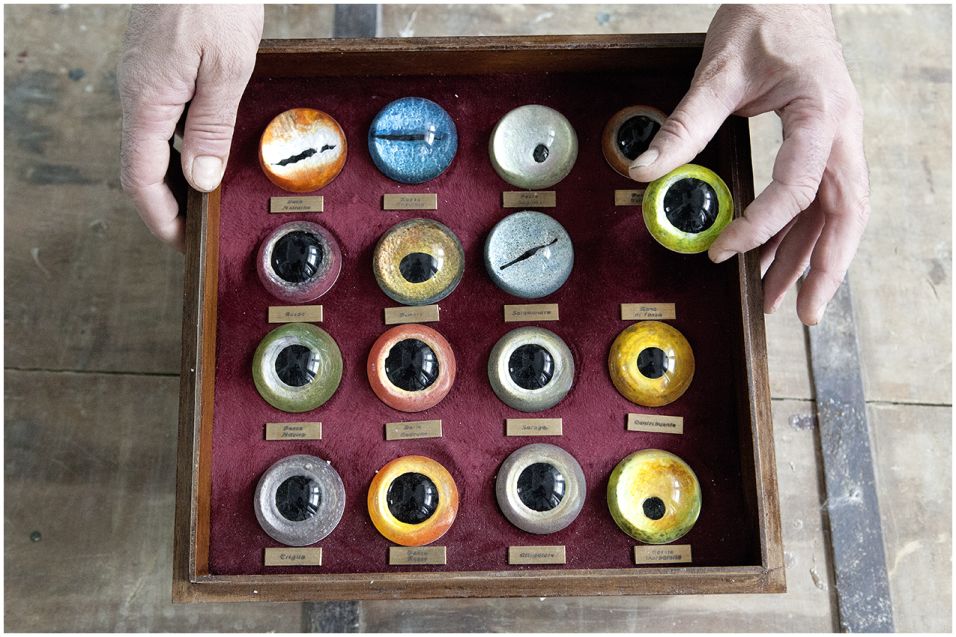
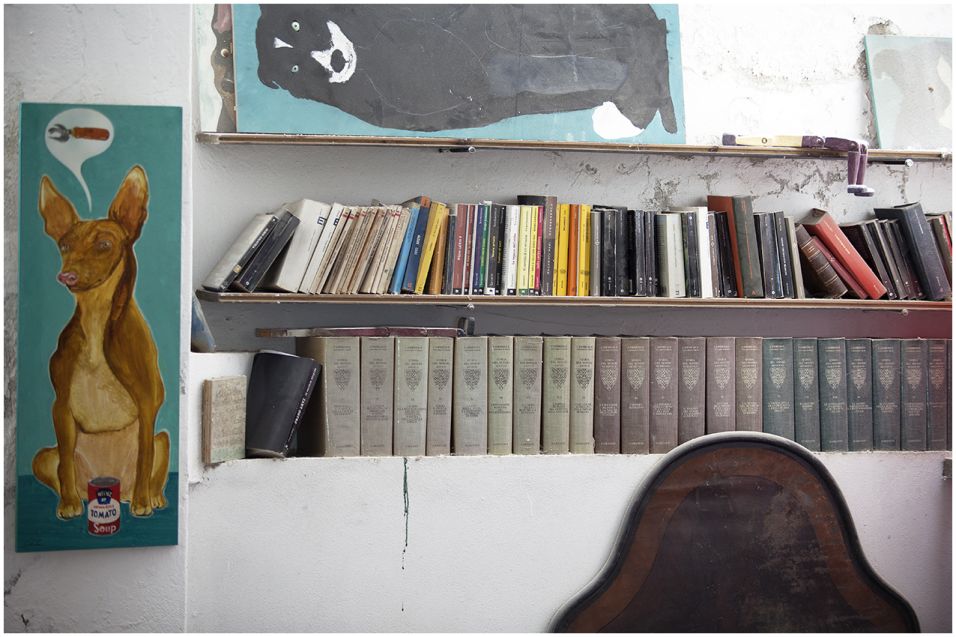

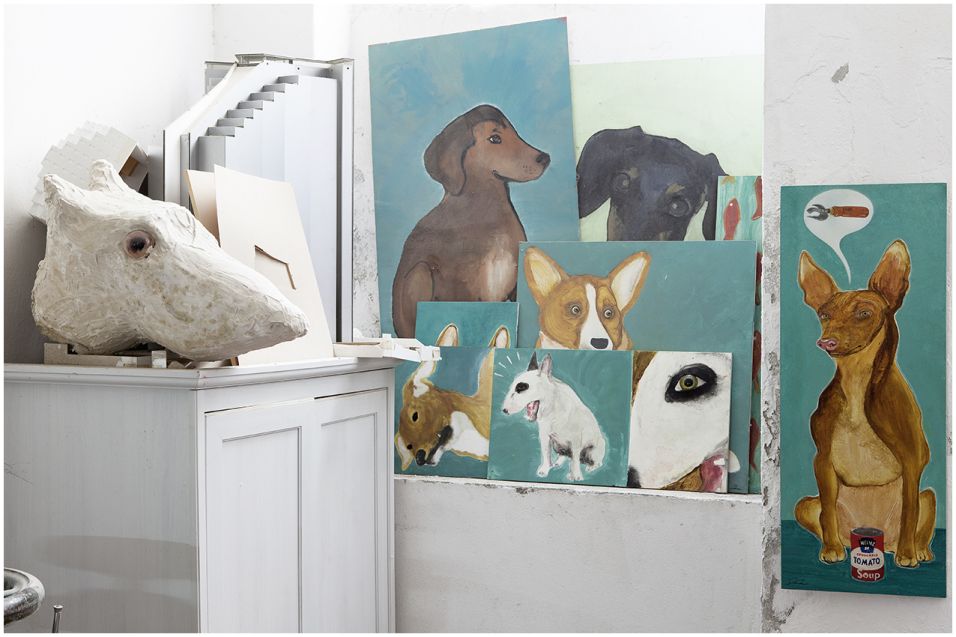
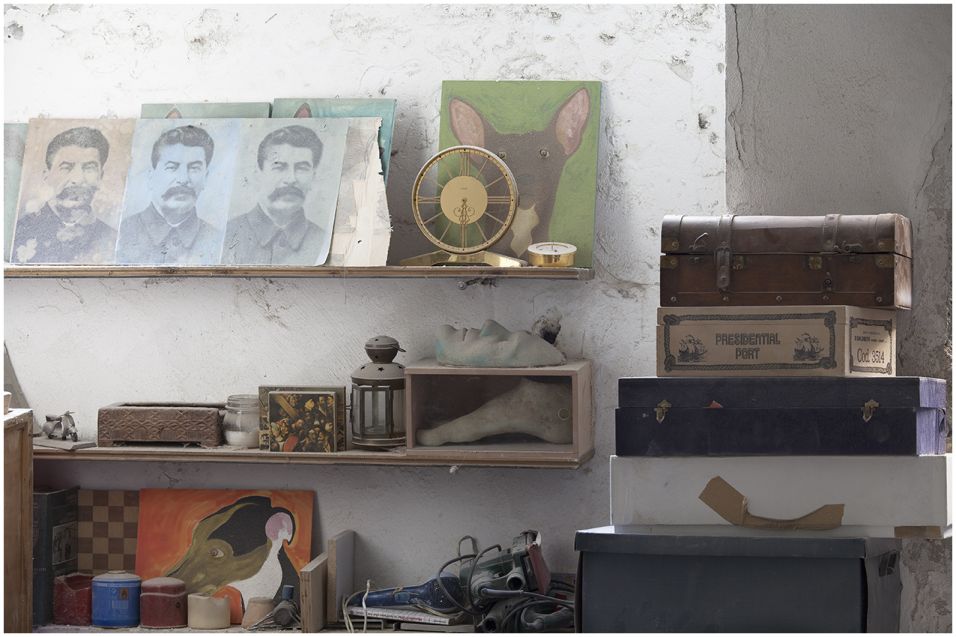
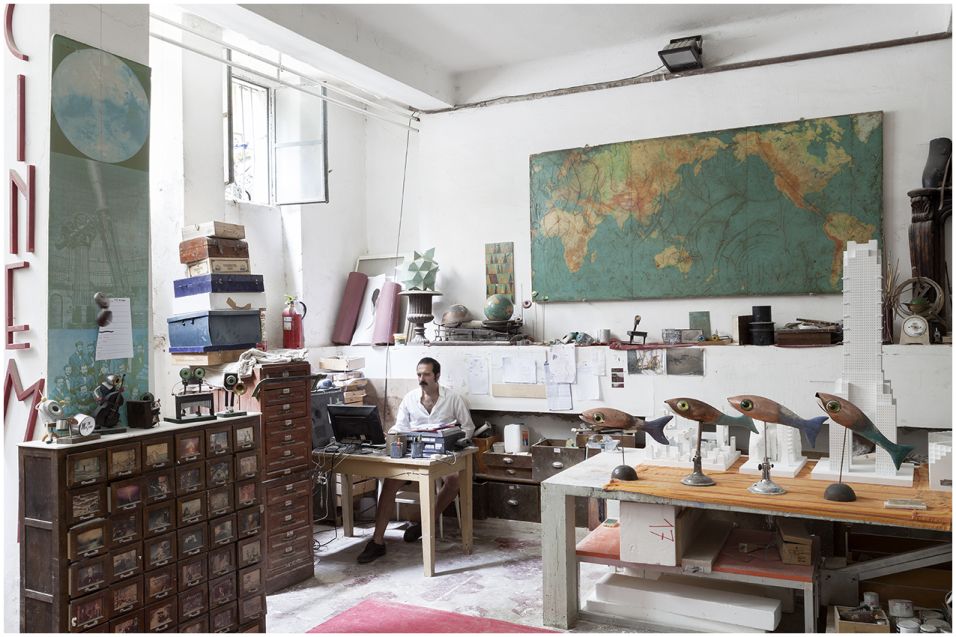
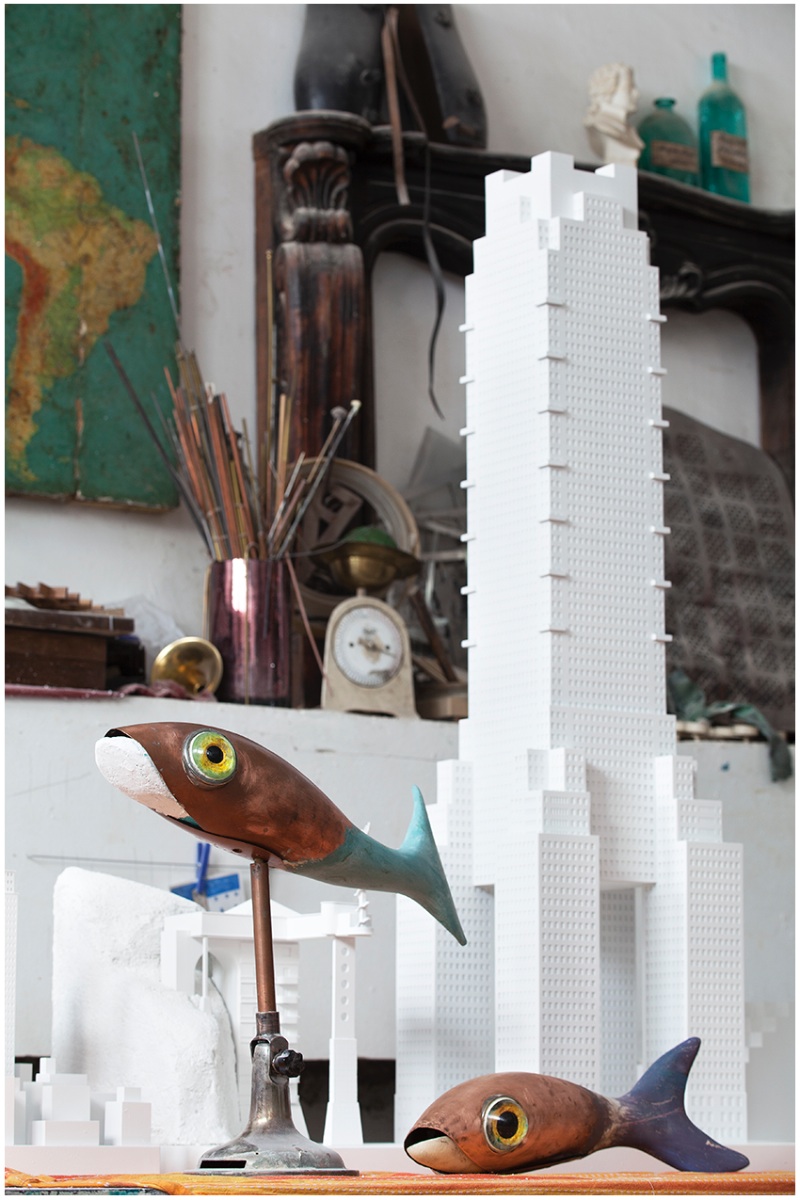
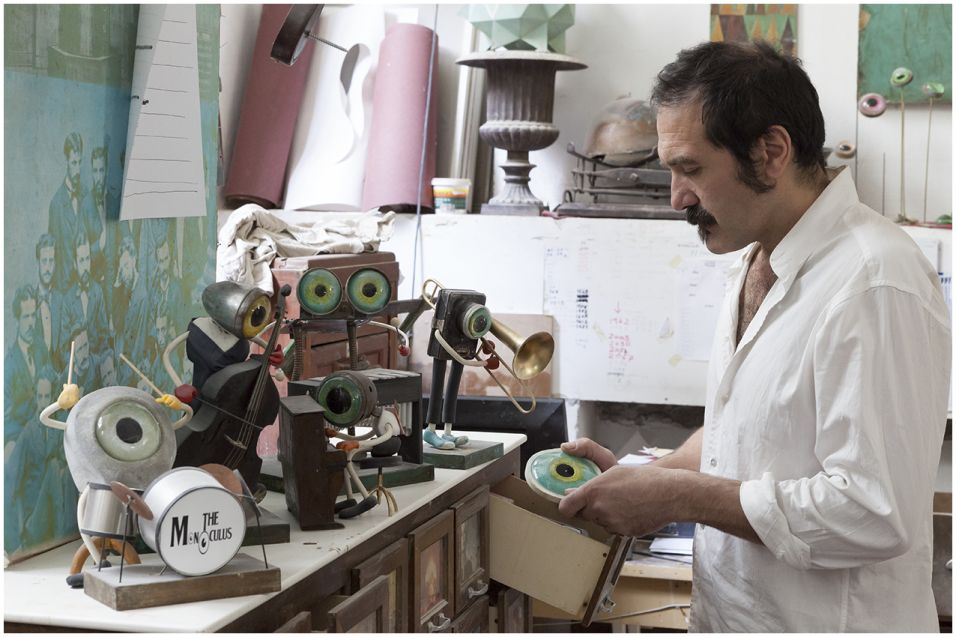
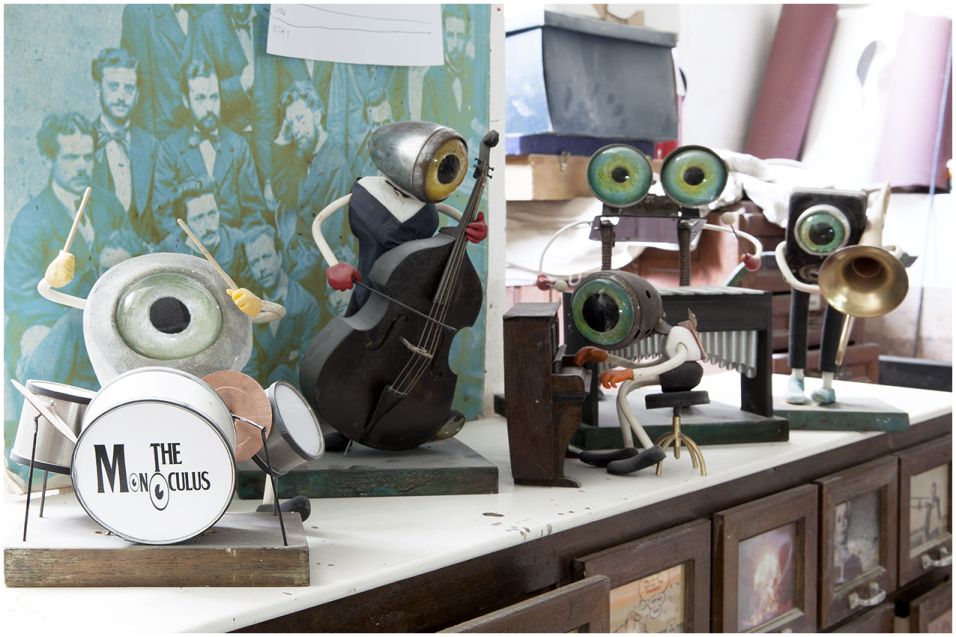
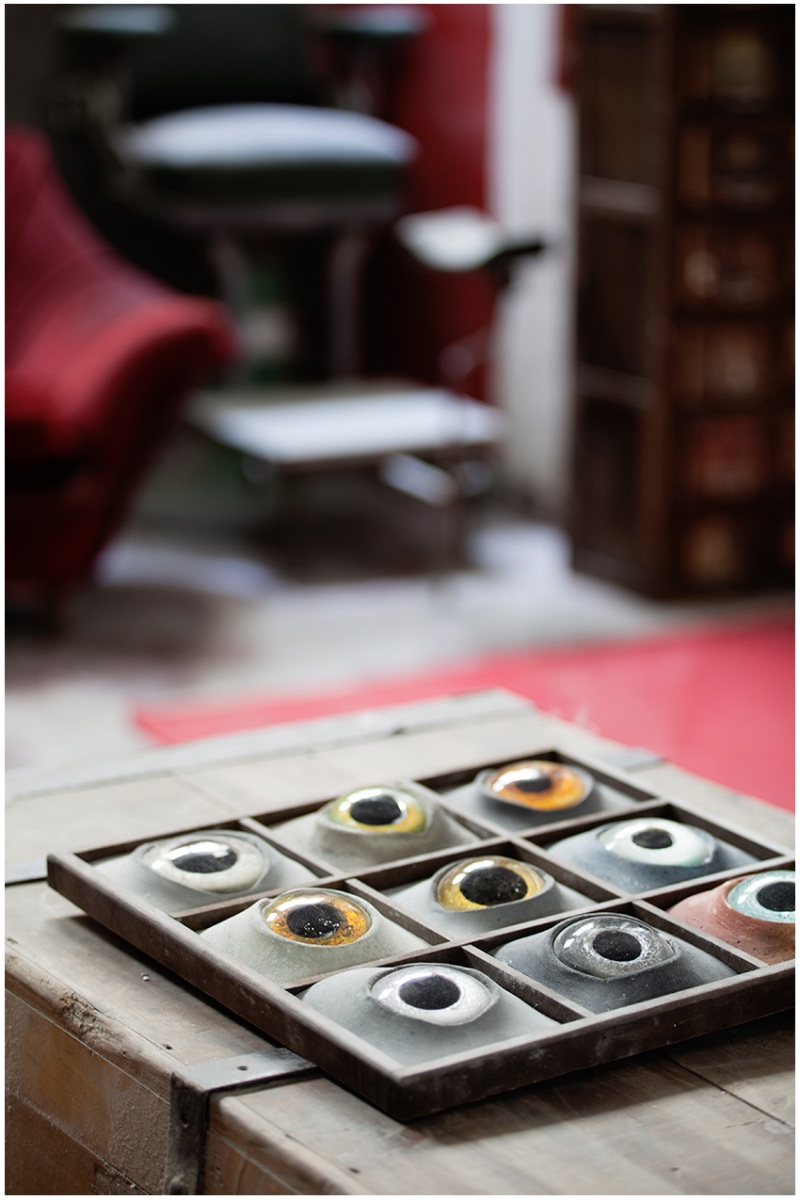
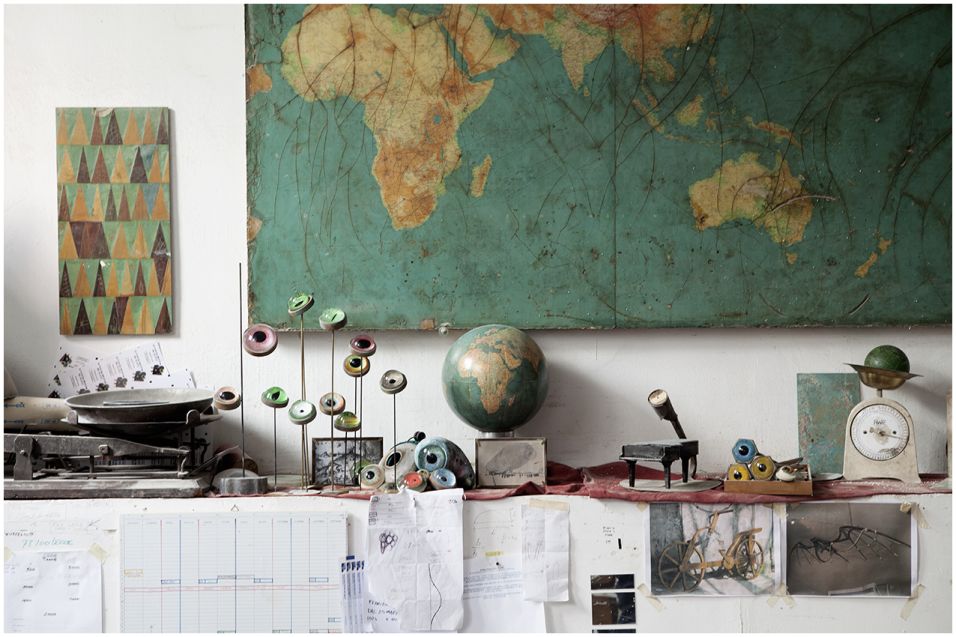

What’s the relationship between Milan and creativity?
The other day I was listening to a programme on the radio that was about creativity. Nowadays in Milan creativity is tightly linked to the world of advertising. When we speak about a creative talent we often think about someone involved in creating sales. And it’s true. The creative talent is the Messiah who works in advertising agencies and comes up with systems that make us think we want a product and then we go out and buy it. I was listening to this programme and, in the meantime, I was pouring some plaster into a mould to make a giant dog. It was not something that anybody had asked me to do and it didn’t make any sense. I made it and maybe someday somebody might buy it off me, but I wasn’t giving it too much thought. So there I was, immersed in dogs, eyes and dust and I thought that maybe, fortunately, there are still some creative talents in Milan that are not in advertising.
Do you know other people involved in artisan activities?
Yes, I know other people that make things by hand. We continue to do so because we don’t know how to do anything else , but it is not a job you can rely on. You do it because of passion. They are people that work in different sectors; artisan, artistic, set-design and construction of architectural models.
What is that extra something that the work of an artisan gives?
It’s all to do with quality. The time devoted to work and the object. Everything we use nowadays has a very brief life, it becomes obsolete immediately. These modern objects are not built to last; they are not made with time and care. Everything is made to cost less. The profits of the mass production companies cannot be made with a certain number of hours by an artisan, otherwise nobody would be able to afford the product. The problem is that we should keep the environments where objects are created with the right time, the necessary time.
You create models for architecture, but now you also do other things…
I create sculptures, paintings and models for various sectors. They are so-called artistic objects. Even if the word ‘artistic’ makes me shudder.
How did your portraits of dogs come about?
The portraits came from a fantastic dog that I lived with, Lucky, who had a protruding eye caused by an illness. I lived with that dog for years and it used to look at me with that protruding eye. Without realising it, I began to draw a dog with an eye hanging out. I did some research on the anatomy of the eye and after some attempts I was finally pleased with the results. My portraits were then a natural progression. Dogs are very comical subjects and they normally have five or six expressions: I’m hungry, I’m tired, I’m angry, I’m scared, Let’s go out, and I need the toilet. Then from the initial portraits with normal sized eyes, I moved on to paint eyes that were bigger and bigger and more and more disturbing, in someway . I asked myself, what can I do with these large-scale eyes? They are the eyes of a monster, why not make some monsters.
And then came the Little Shop of Monsters…
Yes, I began to create one-eyed monsters with a monocle and legs, a fantasy of mine since I was a child. It maybe came from science-fiction films and Greek mythology. It is probably something that strikes some ancestral memory of man because these creatures with only one eye come back time and again. Or maybe aliens are in this way and I dreamed about them one night.
Do you use recycled material?
Yes I do. You can find the effects of the eye with a touch of vintage in these monsters recovered from: headlights, engines, things that have already had a previous life are born again. The wooden legs, on the other hand, are made by me. They are made following the traditions of the first dolls that had joints like the ones from Bali. Dolls that recreated a likeness of life. In the end, in a workshop like mine ideas are born that in turn come to life, from Pinocchio to Metropolis.
Is there one in particular that you are not able to let go?
No, if someone buys one it means that they are the perfect person to keep it. Exchanging money for something that is perfectly useless, I am sure that they will take care of it. If someone buys one it means that they are the perfect person to keep it.
How many have you made so far?
I began in 2011, and I must have made around sixty. Some ended up in China, some in California, Paris, and London. They have been appreciated beyond Piazza Napoli, where my studio is, which is really satisfying for me.
How do find living in your workshop full of so many different things?
It’s my way of living in the city. If my workshop were in the country it would be in this way with green all around me outside. Everything with the function of being able to have a traditional bottega to create in.
I’ve always had a workshop, ever since I began working, and I have always tended to sleep in it. It is probably not the most hygienic thing in the world. There is a loft here where I lived up until a few years ago. I can’t understand how people live in a normal house. This is living for me: a place where I can make a mess, use machines, create dust and paint. These are things you could never do in a normal house. I like getting up in the morning, opening the workshop and picking up where I left off the night before. Jumping in the car, working for eight hours and then coming back home is a stretch. I would like it if everyone had their own workshop with common areas where you could meet up and celebrate together.
Have you any manias?
I have monomania.
Can you give me an example?
I can watch the same scene in Taxi Driver continually for a week to pick up little details. Maybe it’s a desire to obsessively focus on something where I see the seeds of perfection. Because a scene in Taxi Driver is perfect. Music, tempo, lights, sounds, images and the movement of the car. You can only understand it watching it over and over again. These unique combinations are like a massage for the soul. The real artist is capable of creating something so beautiful that you feel the desire to hang it on a wall or place it on a table. Just looking at it will melt your troubles away.
Words and interview: Andrea Mignolo | Photography: Valerio Donghi


